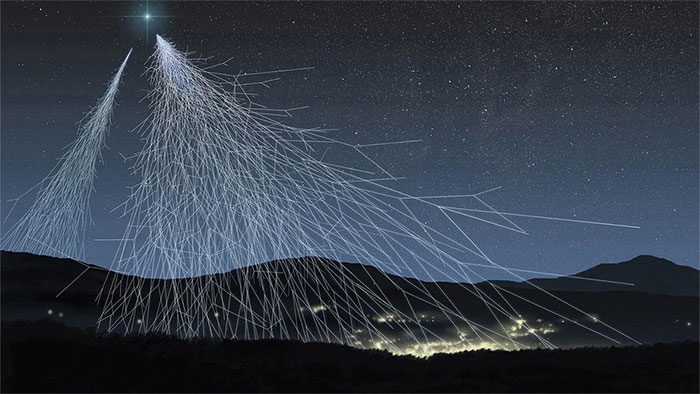Scientists have recently discovered the strongest cosmic rays ever recorded, which may originate from mysterious sources relatively close to Earth.
According to Science Alert, these cosmic rays – which include electrons and their antiparticles, positrons – have been observed at energy levels reaching 40 teraelectronvolts (TeV), which is 40,000 times the energy of visible light.
The High Energy Stereoscopic System (HESS) in Namibia detected these rays. Due to their energy decreasing as they travel through space, such high-energy rays can only be detected if their source is near Earth.

Cosmic rays have become an intriguing subject for many scientists in recent years – (Photo: UCHICAGO NEWS).
However, the exact cause of their creation remains a mystery. The research findings were published in the journal Physical Review Letters on November 25.
“This is an important result, as we can conclude that the detected cosmic ray electrons (CRe) likely originate from a few sources in the vicinity of our Solar System, with a maximum distance of only a few thousand light-years – a very small number compared to the size of the Milky Way, which spans about 100,000 light-years,” said Dr. Kathrin Egberts, head of the astrophysics group at the University of Potsdam (Germany).
Cosmic rays are high-energy particles produced by the Sun, supernova explosions, rapidly rotating neutron stars (pulsars), and other unidentified sources.
When these rays collide with the Earth’s atmosphere, they create particle showers that can be detected on the Earth’s surface. However, reconstructing the original cosmic rays that generate these particle showers is a complex and somewhat uncertain task.
To detect the cosmic ray electrons, researchers used the HESS observatory, which consists of five 12-meter telescopes located on the Khomas Highlands in Namibia.
For over a decade, these telescopes have scanned the atmosphere for traces of Cherenkov radiation – a faint blue light produced when particles travel faster than the speed of light in a medium that slows down light. This phenomenon is similar to the sonic boom created when an aircraft exceeds the speed of sound.
By observing this light and employing sophisticated algorithms to filter noise, scientists have created an unprecedented detailed energy spectrum for cosmic rays reaching Earth.
The amount of these cosmic rays significantly decreases at higher energy levels – suggesting that smaller space telescopes may struggle to detect them in sufficient quantities.
The presence of particles with extremely high energy indicates that at least some sources of these cosmic rays are located near our planet.
“The extremely low flux at higher TeV energy thresholds has limited the competitiveness of space missions in this measurement,” emphasized Mathieu de Naurois, a researcher at the French National Center for Scientific Research (CNRS).
“Thus, our measurements not only provide data in an important and unexplored energy range, enhancing our understanding of the region near Earth, but they also have the potential to become a reference standard for many years to come,” he added.


















































